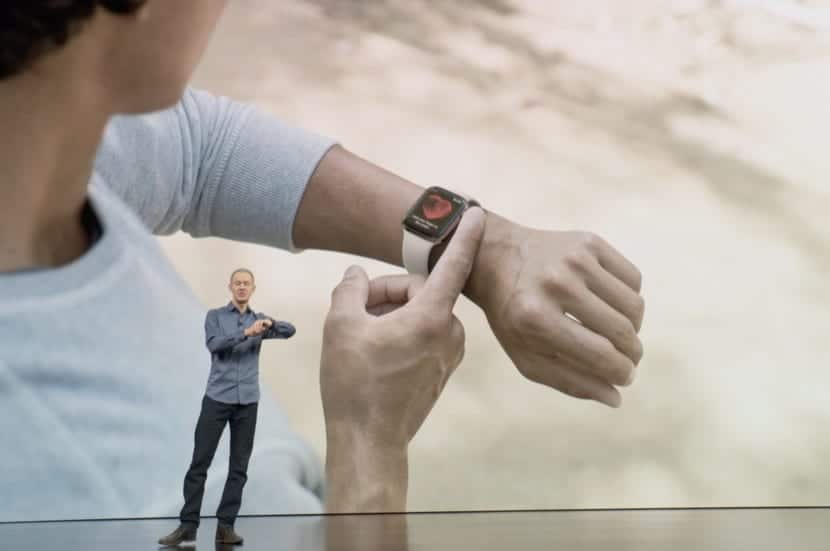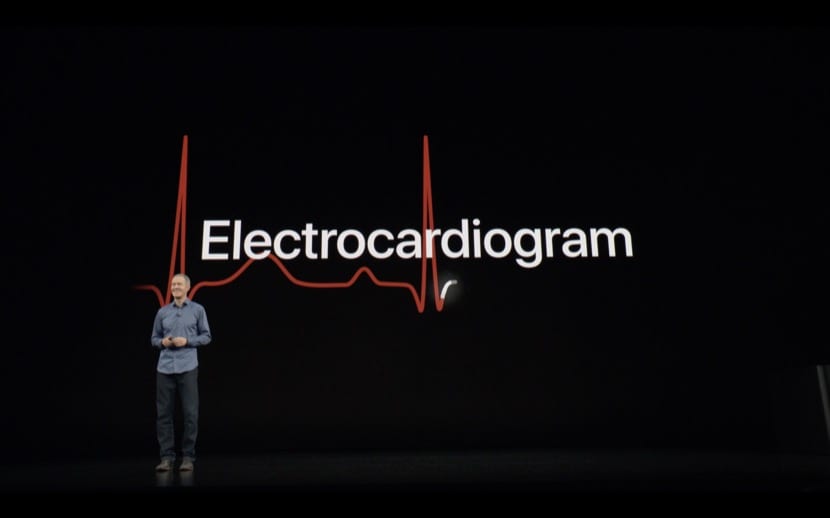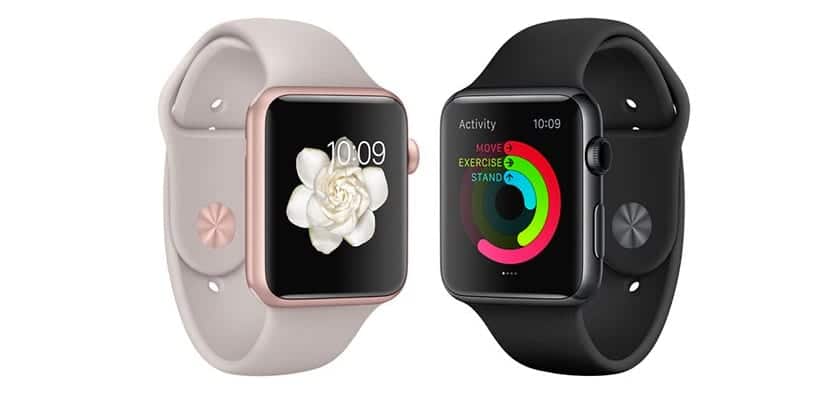
Apple has introduced the Apple Watch series 4 and critics have hailed it as the best product presented this past September 12. And he is not lacking in reasons.
One of the great novelties that it brings is the ability to perform an electrocardiogram. It is not a novelty only for the Apple Watch, it is a novelty in all aspects and that will be very difficult to recreate by other companies. In fact, is the first OTC electrocardiograph (over-the-counter medical device). Today we are going to explain everything so you don't mess up.
Let's start with the basics. An electrocardiogram (ECG) is an indirect measure of cardiac electrical activity. Or, in other words, with each contraction, the heart repolarizes and depolarizes, creating an electric field that is captured by electrodes normally located on the skin. In this case, the Apple Watch has an electrode on the lower face of the watch and another on the digital crown.
An electrocardiograph captures these measurements of electricity and reflects them on a graph. We will see in the ordinate the voltage (mV) and in the abscissa the time (seconds).

In no case do electrocardiographs (Apple Watch included) generate an electric current was doing the heart, this would invalidate the entire ECG. But better to clarify it, because you read everything out there.
Hospital electrocardiographs use ten electrodes (one on each limb and six on the thorax). These electrodes allow us to create twelve leads, that is, twelve different measurements (since the electrodes "see" it from different places) of the same electrical activity (that of your heart), which allows locating different alterations.
The Apple Watch, on the other hand, has only two electrodes. This allows us to obtain a single derivation. In other words, it allows us to "see" the heart from a single point of view. In this case, since the two electrodes are in the upper extremities, it is lead I. If you have ever had an ECG done, you will have observed some letters (I, II, III, aVR, aVL, aVF, and from V1 to V6 ) that correspond to the twelve traditional derivations. Well, the first one that appears, the I, is the one that gets an Apple Watch.
Still, this single referral can provide very valuable information. In fact, interpreted by a doctor, it could diagnose numerous pathologies. Still, I think that the function of the Apple Watch is not to replace ECGs obtained in a hospital, but to refer a person to the doctor or the emergency room.
From a doctor's point of view, an ECG is your best friend. It is a simple, cheap, fast, objective test that offers a lot of information, much more than you might suspect. An ECG will allow us to know possible ischemic heart disease (myocardial infarctions), valvular heart disease, congenital heart disease, heart rate abnormalities, anatomical abnormalities, hemodynamic abnormalities, electrolyte abnormalities, pericardial diseases, ... In summary, numerous pathologies as serious and urgent as they are heart attacks (the leading cause of death in men and the second in women in Spain) that can be diagnosed by an ECG, even a shunt. And not only heart disease, hyperkalemia, a serious electrolyte disorder, can be detected by an ECG like the one on the Apple Watch.
Thus, the usefulness of the Apple Watch - Dr. Benjamin said in the presentation - does not lie in the ECG per se, it lies in being an ECG that we wear on our wrist. Anytime, anywhere, we can get an ECG in 30 seconds. This makes it possible to obtain something very important in cardiology, an ECG at the time of symptoms. This is not the case when going to the doctor when nothing happens to us -as usually happens at the time of the consultation- and having an ECG done in which it is possible that nothing is seen because there are no symptoms at that time.

The Apple Watch alone appears to be capable of detecting sinus rhythm (normal), as well as rhythm disturbances such as atrial fibrillation (AF). But the true diagnostic capacity of the Apple Watch - we must not forget it - passes through the doctor. It will be up to us to do the ECG when we consider it appropriate, but it will be up to the doctor to interpret it.
The Apple Watch ECG will be available at the end of the year in the US., at which point the option for Americans will be activated. This limitation to the USA is due to the nature of the ECG, since being a medical device, it needs the approval of the different authorities.
In the US, it is the FDA that approves medical devices and, according to Apple, has already approved the Apple Watch series 4. In Spain, we must wait for the AEMPS (Spanish Agency for Medicines and Health Products) and the EMA (European Medicines Agency) to give approval. Still, the fact that the FDA has already approved it makes approval on this side of the Atlantic a matter of time.
The question is whether this capability will arrive before the Apple Watch series 5 (next year presumably). In the US it is planned for the end of the year without any mention of the rest of the world, so presumably until 2019 we will not see the ECG in Spain.
Still, the moment it is approved, it is a matter of activating it. It's not like the LTE version of the Apple Watch that was only on sale in supported countries. In this case, we understand that all Apple Watch series 4 have the necessary hardware to perform the ECG.
